Skeletons in the Desert
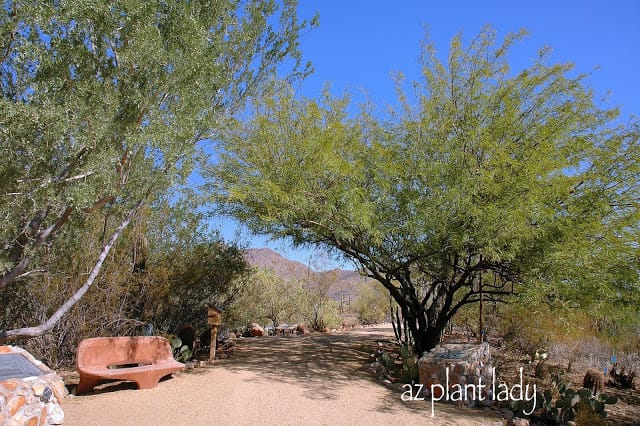
Unveiling the Mysteries of Cactus Skeletons in the Desert
When you think of a desert, you likely picture vast stretches of sand, scorching sun, and towering cacti. These iconic desert plants, such as the saguaro cactus, play a crucial role in the ecosystem and are known for their remarkable resilience in arid environments. However, have you ever wondered what lies beneath their impressive exteriors? On a recent walk through the desert, I found these skeletons. We’ll delve into the fascinating world of cactus skeletons in the desert, shedding light on the woody remains known as “ribs” that provide crucial support to these giants.
Saguaro Cactus: A Desert Sentinel
The saguaro cactus (Carnegiea gigantea) is arguably the most recognizable symbol of the American Southwest’s deserts, particularly the Sonoran Desert. These imposing cacti can reach heights of up to 60 feet and have a distinctive columnar shape, often adorned with arms that reach out like welcoming gestures to the desert’s harsh conditions.
A Closer Look at Cactus Ribs
One of the most intriguing aspects of the saguaro cactus is its internal structure. Beneath its fleshy, water-storing exterior lies a hidden framework known as “ribs.” These ribs are not bones, of course, but they serve a similar purpose in providing structural support to the cactus.
The ribs of a saguaro cactus are typically woody and arranged in a vertical pattern within the plant’s body. They extend from the base of the cactus up into the arms, acting as a skeletal framework that gives the saguaro its characteristic shape and enables it to thrive in the harsh desert environment.
Why Do Cactus Skeletons Exist?
The presence of ribs or cactus skeletons in the desert serves several essential functions:
- Structural Support: The primary role of cactus ribs is to provide structural support to the plant. This support becomes crucial as the cactus grows taller and heavier, preventing it from collapsing under its weight.
- Water Storage: While ribs are not directly involved in water storage, they indirectly facilitate it. The ribs help maintain the cactus’s shape, which, in turn, ensures the efficient storage of water in the fleshy tissue surrounding the ribs.
- Growth and Survival: Cactus skeletons play a vital role in the cactus’s ability to grow and survive in the desert. The ribs allow the saguaro to withstand strong winds and maintain its upright posture, ensuring optimal sun exposure for photosynthesis.
As I began my trek through the desert, I found beautiful specimens of cacti, plants and even some wildlife, but I also found a few skeletons as well…..
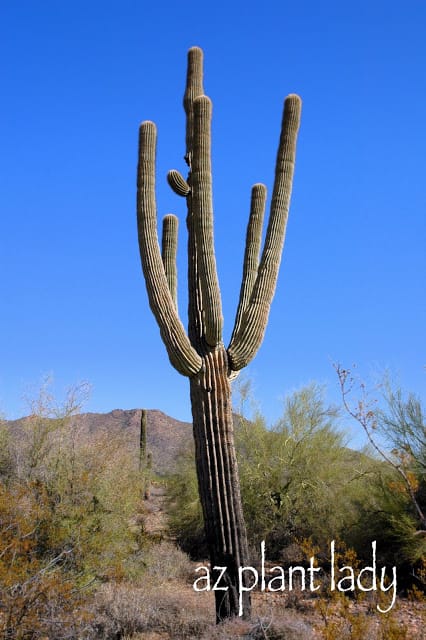
Mature Saguaro
This beautiful Saguaro was one of the first cacti that greeted me on my walk.
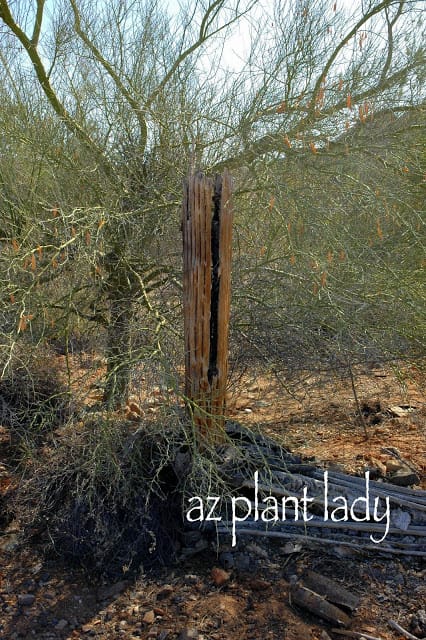
The first skeleton I came across was from a Saguaro cactus; part of it still standing upright. You can see where top part of the skeleton has fallen to the ground after the cactus plant has died.
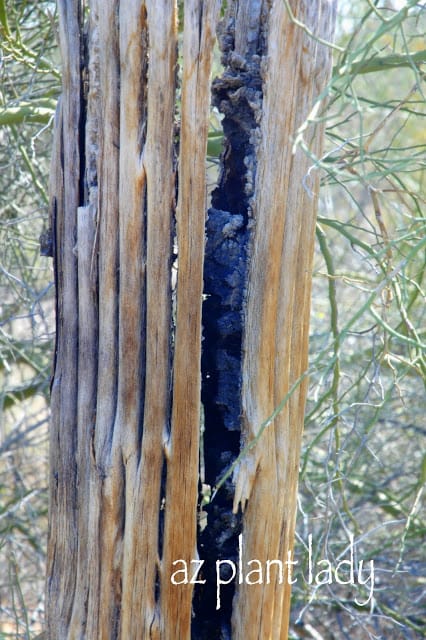
Here it is close up. The decay is till present as you can see inside. The woody remains of the saguaro are called ‘ribs’ and are what supports the Saguaro cactus.
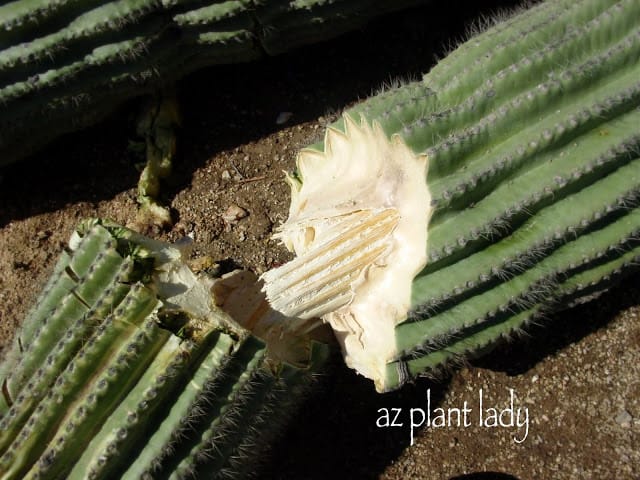
Above, is a photo of a Saguaro that had just fallen. You can easily see the ribs. Whenever a Saguaro cactus would fall in a landscape setting, we would move it to an out of the way area where it could decay. Then we would take the ribs and put them back into the landscape as a display. Saguaro ribs are considered a beautiful accent in the desert landscape and are prized by many.
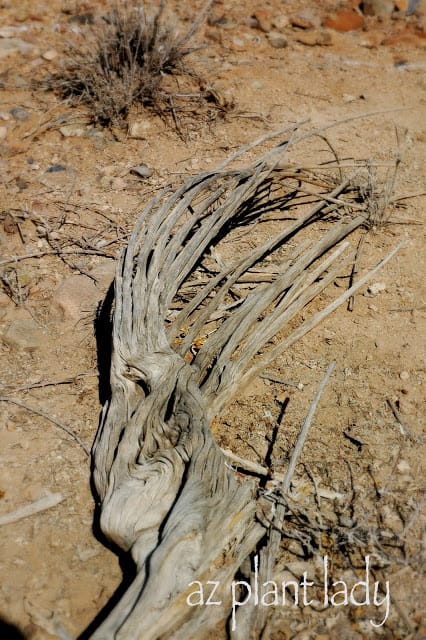
Skeletons in the Desert can be Building Material
Native Americans used Saguaro ‘ribs’ to build roofs, walls and even furniture. Another use was that they would make long poles that they used to knock off the Saguaro fruit, which is edible.
Saguaro are not the only types of cacti that leave behind skeletons….
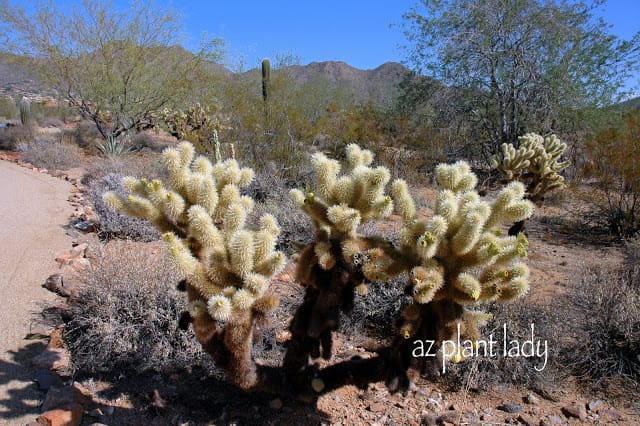
Teddy Bear Cholla (Opuntia bigelovii)
Teddy Bear Cholla (above), also has an interesting skeleton.
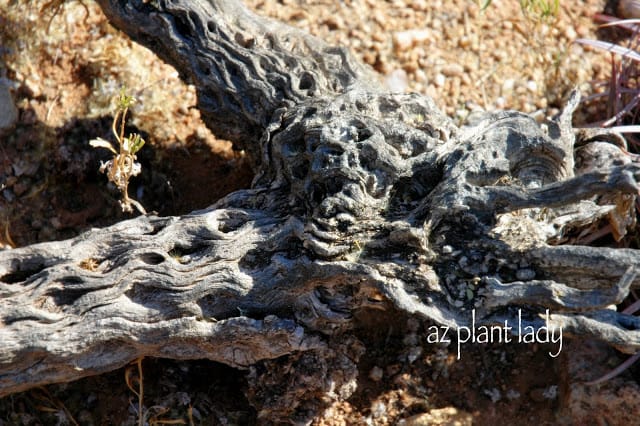
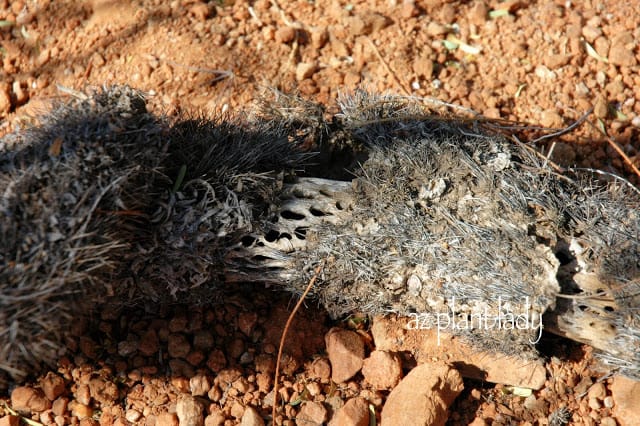
Above, is a photo of a segment of Teddy Bear Cholla that is in the process of decaying. You can see the woody skeleton starting to show.
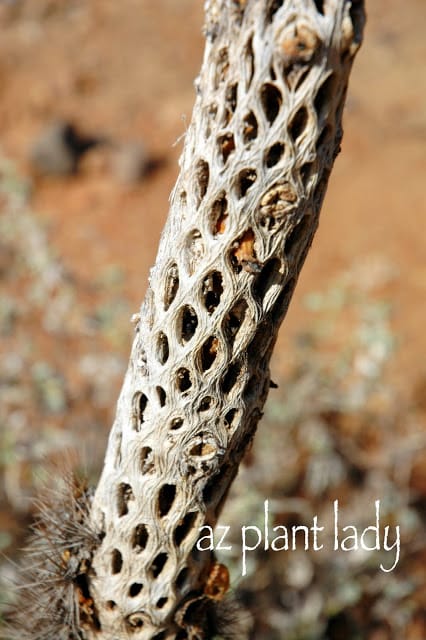
Cholla skeletons are sometimes used as walking sticks. Artisans also use cholla skeletons to make southwestern forms of art.
Cactus Ribs are the Backbone to the Desert Cactus
Cactus skeletons, or ribs, are nature’s ingenious solution to help these iconic desert plants thrive in extreme conditions. They offer support, aid in water storage, and contribute to the cactus’s overall resilience. The next time you encounter a towering saguaro cactus in the desert, take a moment to appreciate the hidden framework that enables this remarkable plant to stand tall and flourish amidst the harsh desert landscape.
Please note that it is illegal to remove Saguaro and Cholla skeletons from the desert, unless you have permission from the owner. Specimens can sometimes be purchased at certain plant nurseries that specialize in cacti.
So do as I do…..enjoy them out in the desert and take lots of photos.

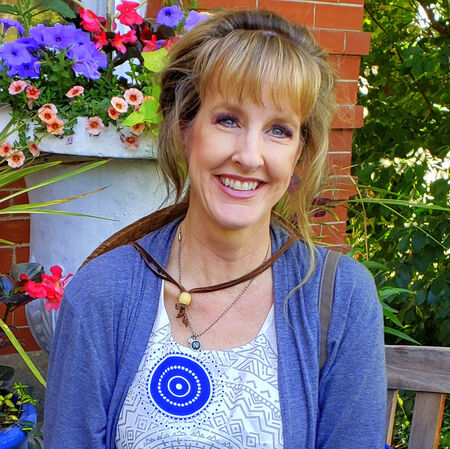 Noelle Johnson, aka, 'AZ Plant Lady' is a author, horticulturist, and landscape consultant who helps people learn how to create, grow, and maintain beautiful desert gardens that thrive in a hot, dry climate. She does this through her consulting services, her online class Desert Gardening 101, and her monthly membership club, Through the Garden Gate. As she likes to tell desert-dwellers, "Gardening in the desert isn't hard, but it is different."
Noelle Johnson, aka, 'AZ Plant Lady' is a author, horticulturist, and landscape consultant who helps people learn how to create, grow, and maintain beautiful desert gardens that thrive in a hot, dry climate. She does this through her consulting services, her online class Desert Gardening 101, and her monthly membership club, Through the Garden Gate. As she likes to tell desert-dwellers, "Gardening in the desert isn't hard, but it is different."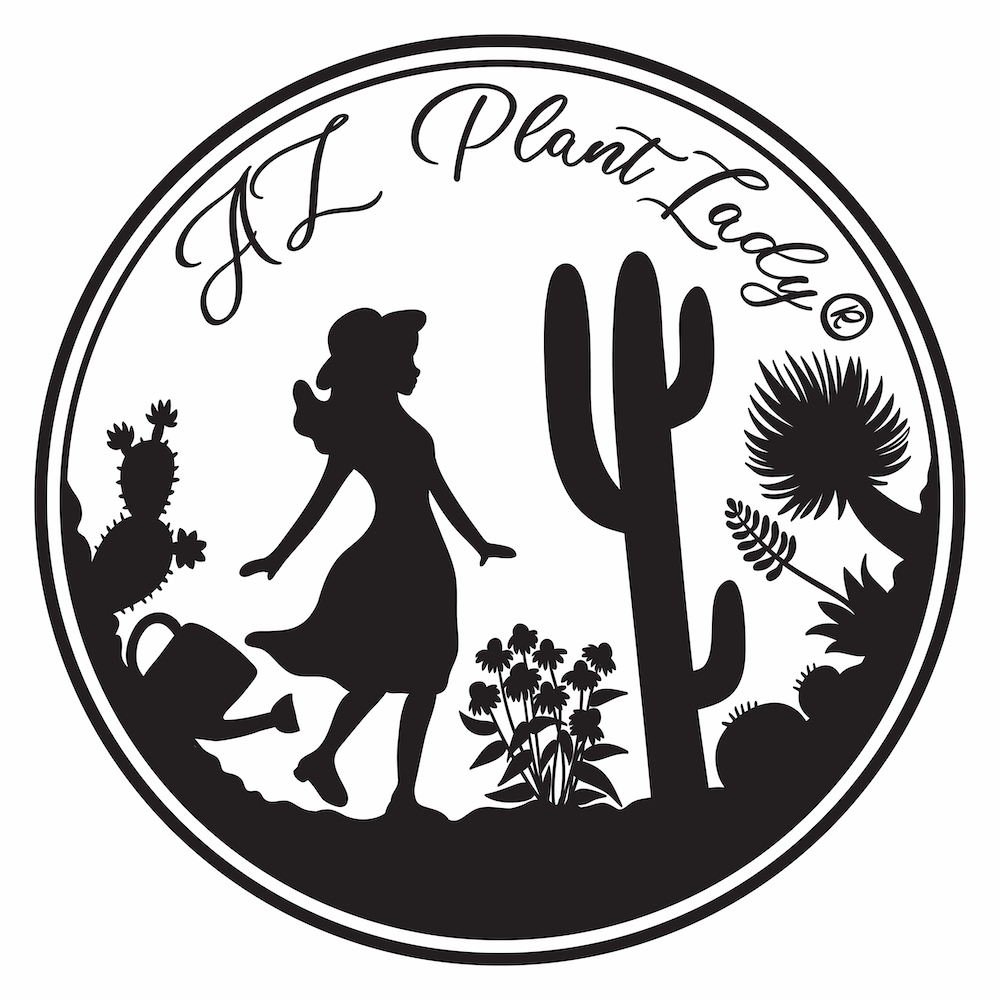
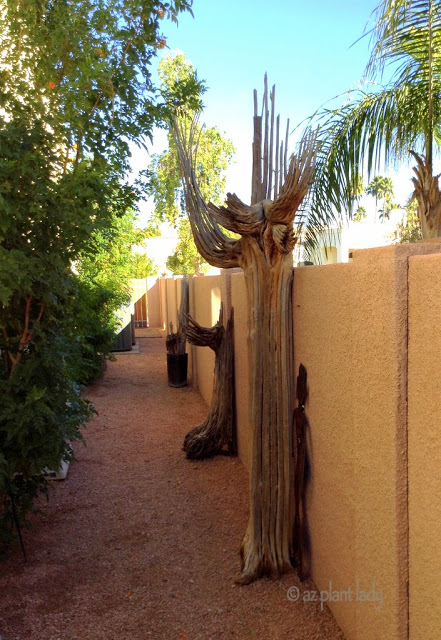
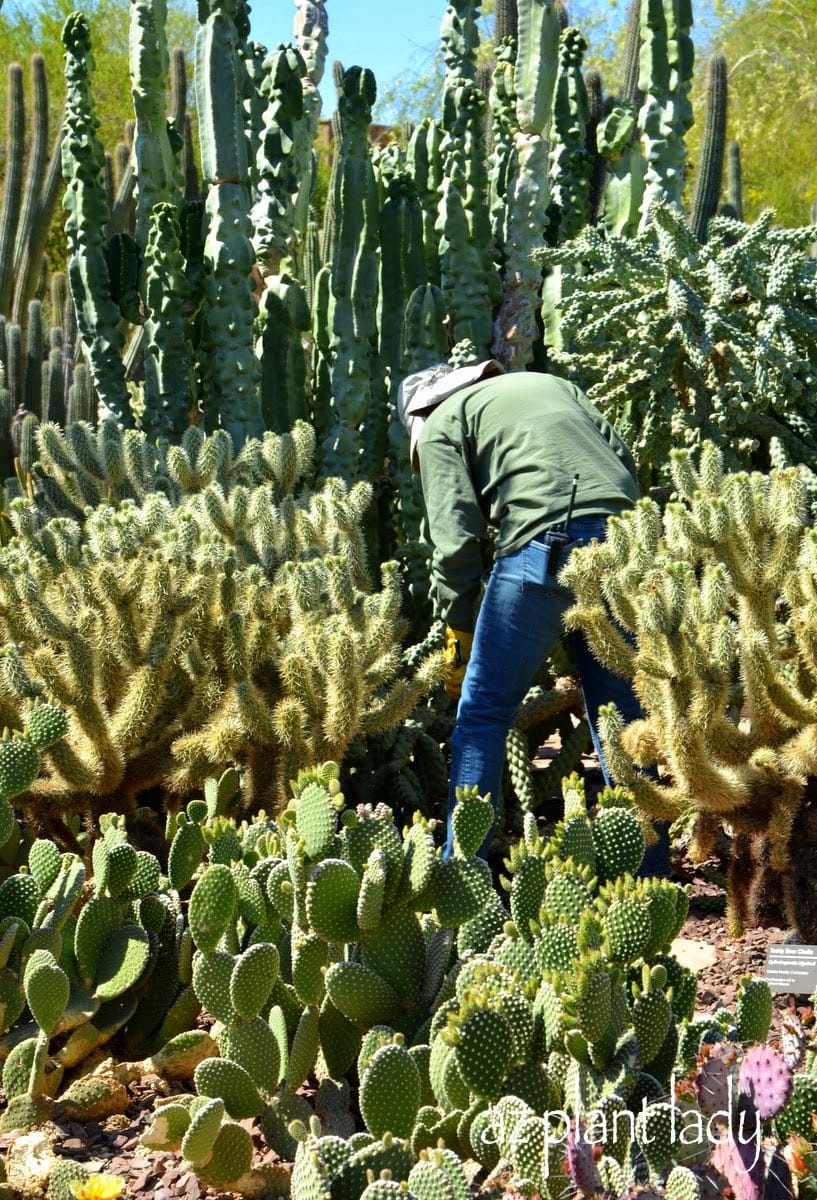
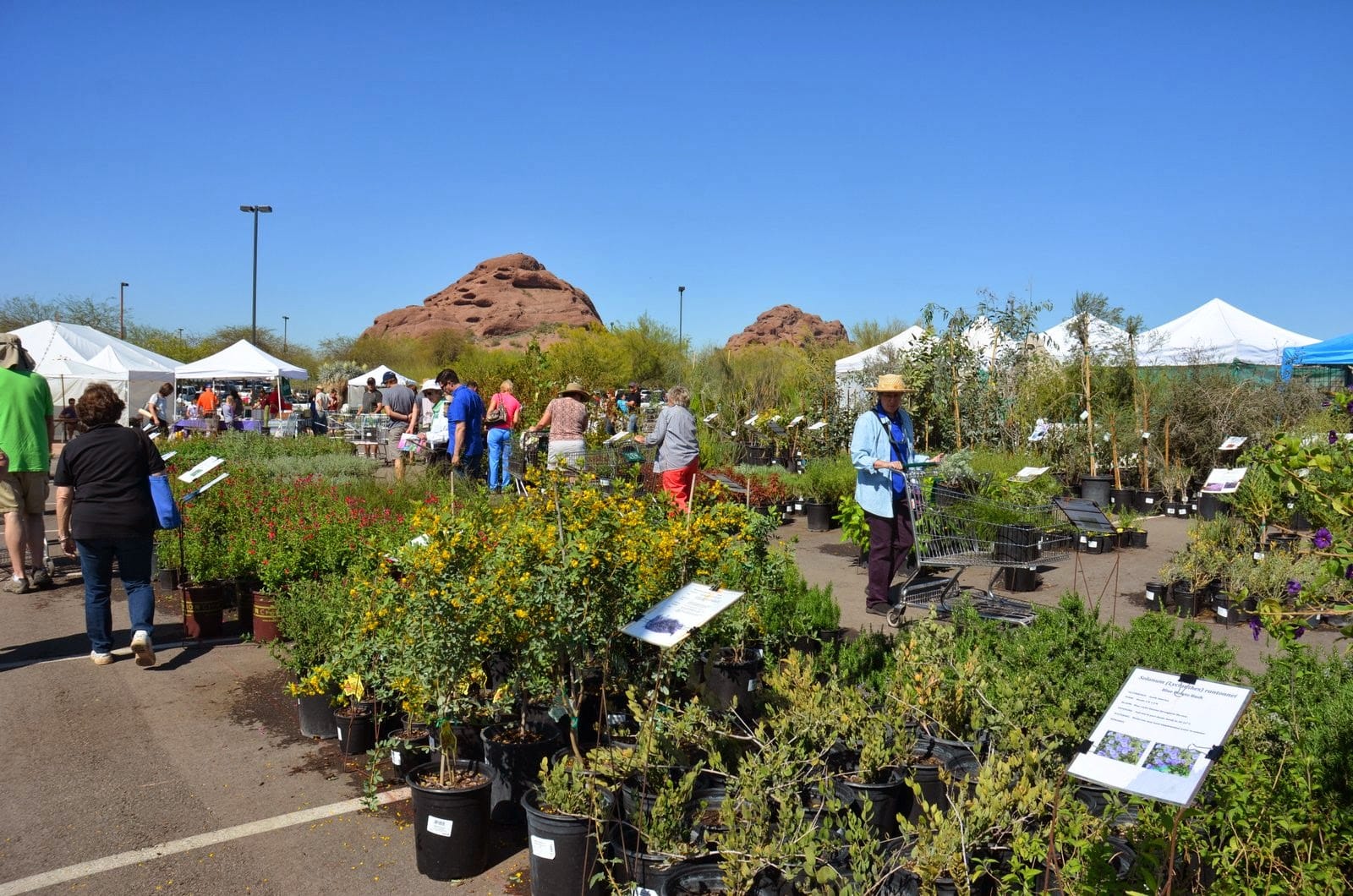
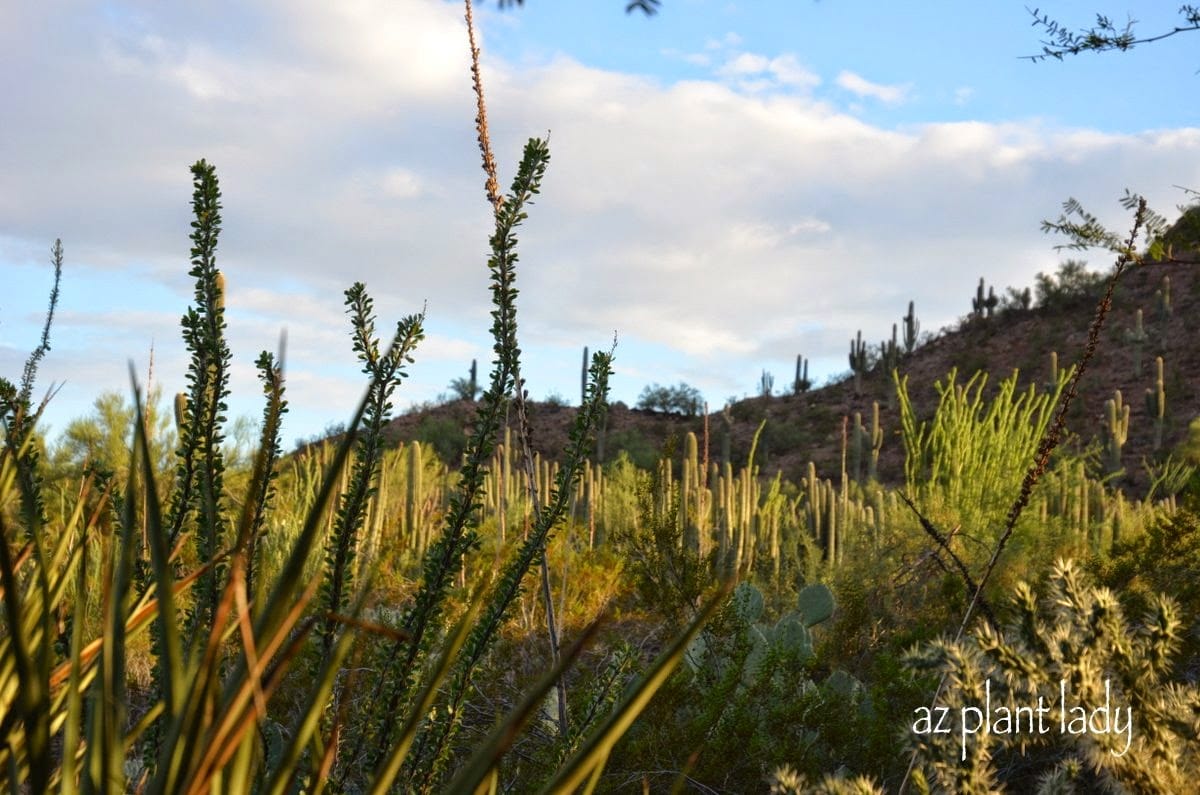
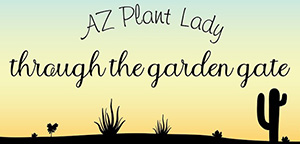

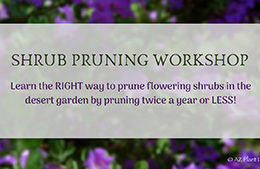


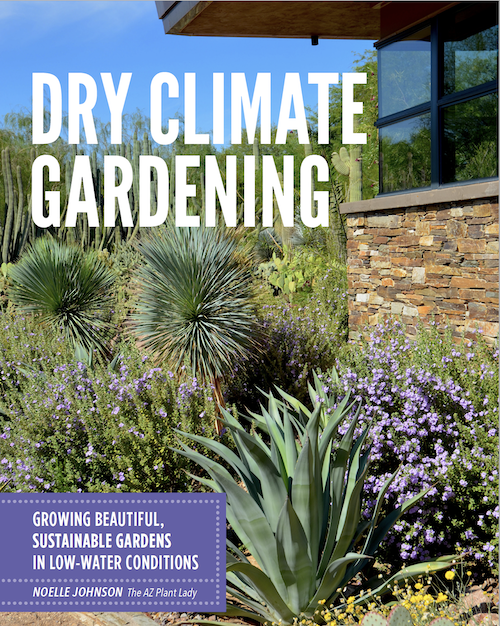
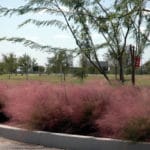
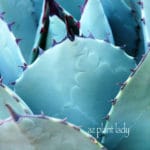
Interesting to see the inside of the cactus. I didn't know that the ribs are kept in the landscaping. They are interesting!
Okay, I won't drag any of them home. :o)
They are rather distinct looking and I can see why they make good subjects for photography.
Rosey
It would be so neat to go for a walk in the desert. I guess the Saguaro cactus is the one I most identify with-the one I've seem most in pictures.
But the Cholla cacti is the neatest looking one -like you said it would make a great walking stick. Great pictures and good information!
vickie
What an interesting post thank you.
These guys were just featured on the Gardener Guy show this weekend! They were so awesome. I could not believe that some of them can weigh like 18 tons? That is pretty heavy. The skeletons are ever so cool. Who would've though cacti had such cool underpinnings?
Beautiful photos, informative commentary.
Your post would be perfect as an entry in the Gardening Gone Wild
http://www.gardeninggonewild.com/?p=9088#more-9088
photo contest this month. The theme is 'end of the line'. Great photos & very interesting.
I didn't know about cactus ribs — they are very striking.
I'm learning so much about desert plant life from reading your blog! It was all so foreign to me while visiting Arizona, so maybe I'll be better informed next time we go.
If I was living in the desert, I would secretly plant all the fallen cactus back before they turn into skeletons.
Then I would be a like a "desert robinhood" guarding each cacti..
(lol)
Nice shots Noelle, enjoyed those inticate artworks.
I'd never heard about the ribs of cactus and how they are used. They really are so interesting looking. I feel like I may have seen the Cholla wood before, I love the texture of it.
Fascinating. It is as if they become a cross between wood and coral.
Lucy
How very cool, first, learning cactus is like another language and secondly, what a wonderful use of the ribs or remains. This is so very different from east coast gardening. Thanks for showing the newly fallen cactus for perspective.
Wow, this was quite a fascinating post!! You are awesome..great photos and descriptions…very cool! I truly enjoy your posts… and look forward to them!
You have a beautiful blog! It is always so nice to see a different garden zone. My heat tolerable plants are my favorite. In fact, tonight I hope to blog about my Lantana blooming in our greenhouse while it is 30* out again tonight.
Thank you for stopping by mine. If you like I can try to send you a couple of those osage oranges?
Hi,
I live in Seattle, and years ago when I was in Phoenix I saw a cactus skeleton and fell in love with them. Of course, I was to find out they are somewhat protected.
Fast forward……at a garage sale one day and I discovered I knew the person. It was her father's estate and he had lived in Arizona before. Yes, up in the attic were some skeletons. I bought them and and have had them for years, sitting down in the basement hiding behind "stuff." Just uncovered them and they look to have different parts. I'm wondering how I can find out what they are exactly? The larger piece is about 6 feet tall, looks like "ribs" and is tied together around the top and bottom, but I can see "inside" what looks to bea separate piece resembling the cholla. There is also another piece about 5 feet tall.
Thanks for any help!
Gatoraunt
Hello Gatoraunt,
I would be happy to look at pictures of your cacti skeletons if you like. Just email them to me using my email link on my sidebar. I will do my best to id them 🙂